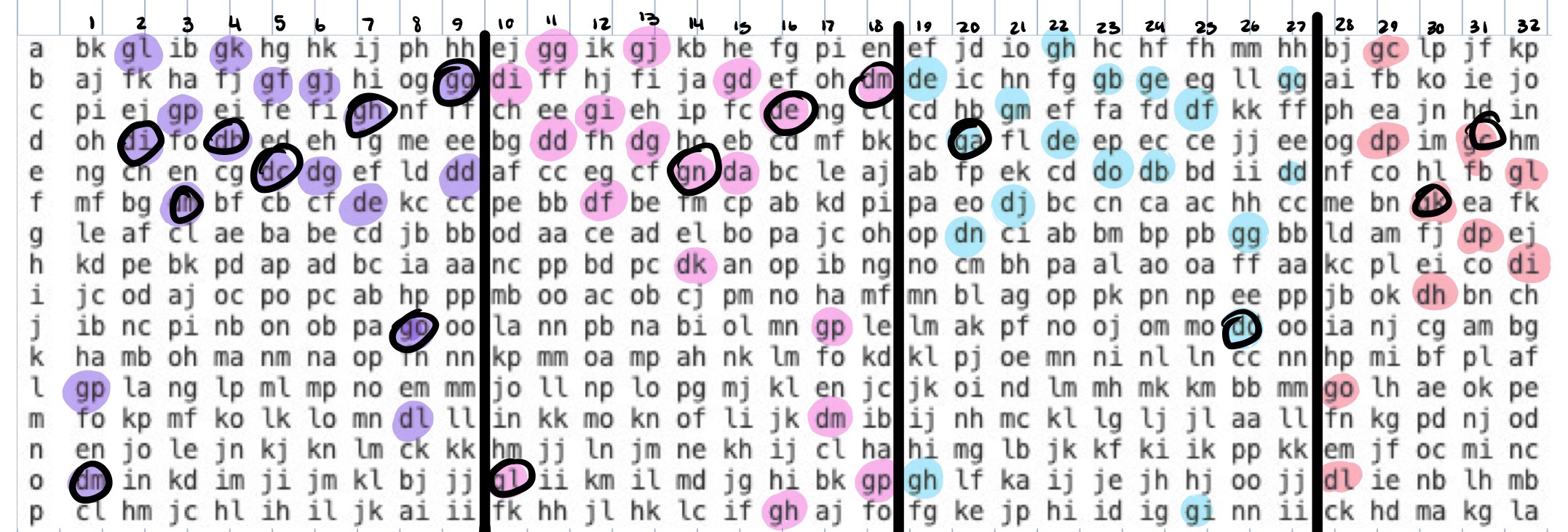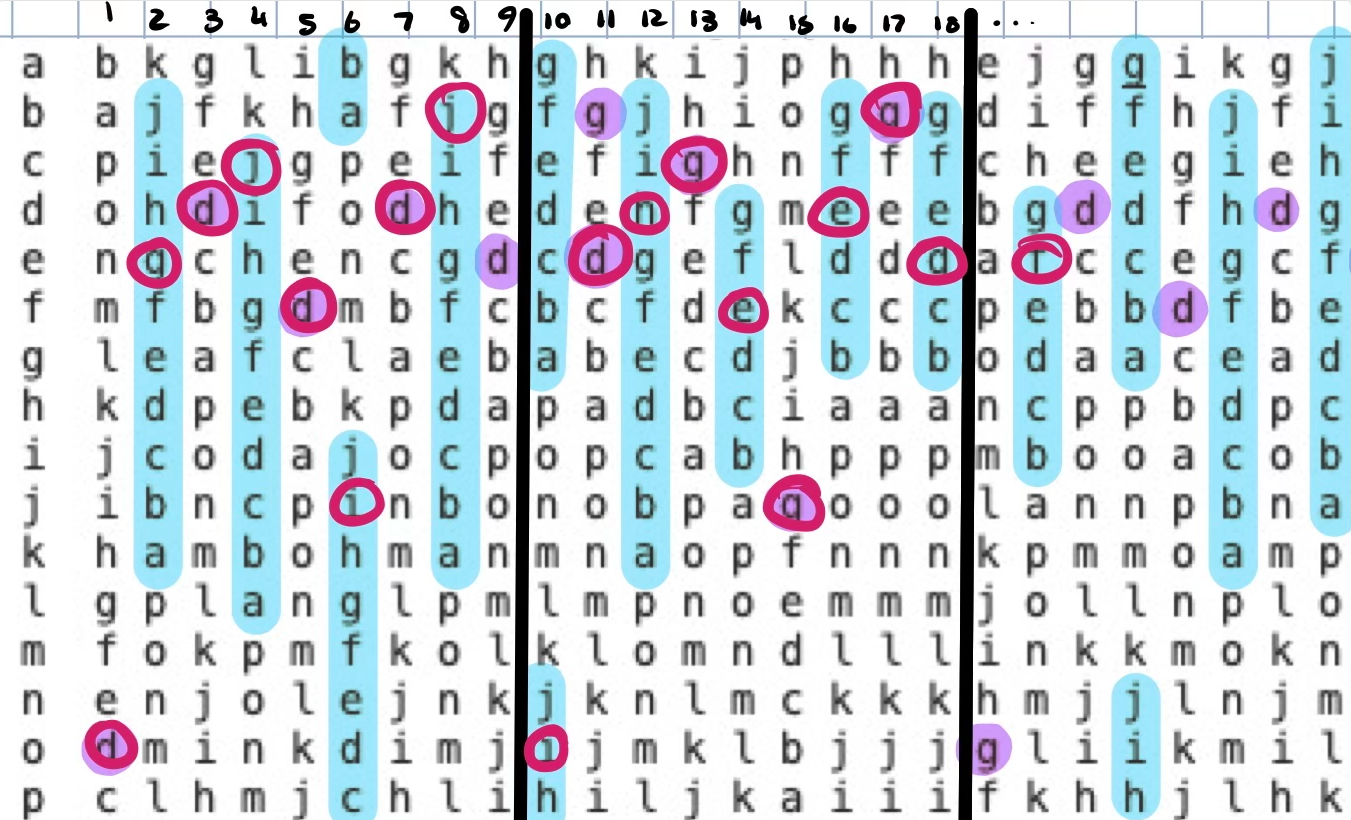New Vignere
Problem Description
Another slight twist on a classic, see if you can recover the flag. (Wrap with picoCTF{}) bkglibgkhghkijphhhejggikgjkbhefgpienefjdioghhchffhmmhhbjgclpjfkp new_vignere.py
Points
300
Question Type
Cryptography
Hints
Approach
Understanding the Code
Suggested to read the writeup for New Caesar first. The code given is the same as New Caesar except for the restrictions on flag and key.
flag = "redacted"
assert all([c in "abcdef0123456789" for c in flag])
key = "redacted"
assert all([k in ALPHABET for k in key]) and len(key) < 15
The flag can only contain the characters in "abcdef0123456789" and the key needs to be in ALPHABET (letters from 'a' to 'p') and has a maximum length of 15.
Solving
Because the flag is limited to a few characters, I ran "abcdef0123456789" in my code for New Caesar to get the value of b16. There I found that each character corresponded to two characters.
gb - a gc - b gd - c ge - d gf - e gg - f
da - 0 db - 1 dc - 2 dd - 3 de - 4 df - 5
dg - 6 dh - 7 di - 8 dj - 9
This means that in g16, every other character is either a 'g' or a 'd'.
In the original code, enc += shift(c, key[i % len(key)]), which means that the values of key are looped through to get the values of enc. This means that there will be a pattern in the key every len(key) values in enc.
I decided to try manually getting the flag so I printed out the values of b16 for the letters 'a' to 'p'.

I first attempted to find a pattern in the letters at index 0, 2, etc. I highlighted all pairs that start with g or b to try to find a pattern in the key. Column 10 is the first repetition of either a key of 'l' or 'o' which are the values found in column 1 so I tried seeing if there was a pattern every 9 pairs. The circles correspons to how I figured out the value for the 9 pairs. I was unable to find the 6th pair but I guessed that I would be able to find it after taking into account the second letter. The values for the key we currently have are "odfde(b/e)cjb".

Next I tried to find a pattern including the second letters in the pair. As the pattern above is 9 characters, if we take into account the second letter, that would mean that the flag is 18 (9 * 2) characters long, which exceeds the maximum length for the key. This means thatat there is a repeated value in between pair 1 and pair 9. It is likely that the pattern repeates every 9 letters so I tried it out. If the first value is a 'd', the character needs to be an integer so the second value is a character from a to j. If the first value is a 'g', the character is a letter and the second letter is a letter between 'b' and 'g'.

In the image above, it only shows the first three loops because it is possible to find the pattern with just the first three loops. There is a pattern every 9 letters and the letters we get from that are "oedcfjdbe", which is the key.
I slightly modified the code from New Caesar to use the key found, new_vignere_solve. The code to convert from b16 to the flag is the same while the code to convert from enc to b16 now loops through the key.
enc ="bkglibgkhghkijphhhejggikgjkbhefgpienefjdioghhchffhmmhhbjgclpjfkp"
ALPHABET = string.ascii_lowercase[:16]
key = "oedcfjdbe"
b16 = ""
loop =0
for i in enc:
k = ALPHABET.index(key[loop % len(key)])
loop = loop + 1
index = ALPHABET.index(i)
if(k <= index):
b16+=chr(index -k+97)
elif (k <= index + 16):
b16+=chr(index +16-k+97)
Running the code, we get that the flag "698987ddce418c11e9aa564229c50fda" and testing picoCTF{698987ddce418c11e9aa564229c50fda}, we find the flag.
Flag
picoCTF{698987ddce418c11e9aa564229c50fda}